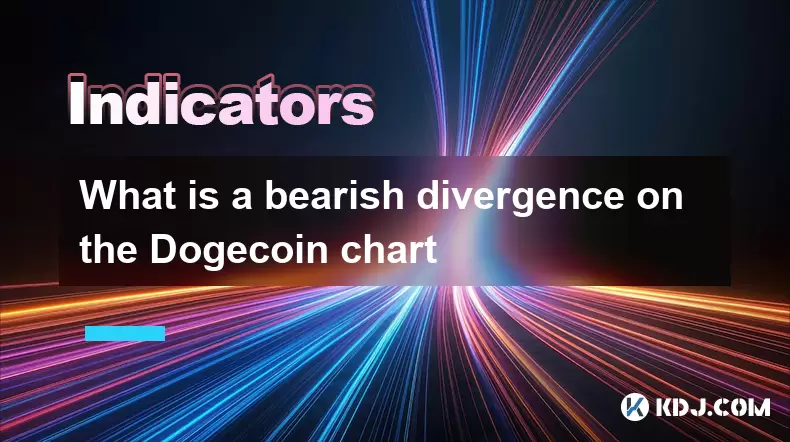-
 Bitcoin
Bitcoin $120400
1.77% -
 Ethereum
Ethereum $3615
7.90% -
 XRP
XRP $3.580
17.84% -
 Tether USDt
Tether USDt $1.001
0.06% -
 BNB
BNB $729.4
1.25% -
 Solana
Solana $179.9
5.04% -
 USDC
USDC $0.0000
0.01% -
 Dogecoin
Dogecoin $0.2311
8.22% -
 TRON
TRON $0.3226
4.04% -
 Cardano
Cardano $0.8490
12.85% -
 Hyperliquid
Hyperliquid $46.45
0.72% -
 Stellar
Stellar $0.4913
8.54% -
 Sui
Sui $4.027
2.00% -
 Chainlink
Chainlink $18.51
11.67% -
 Hedera
Hedera $0.2818
21.51% -
 Avalanche
Avalanche $24.03
7.40% -
 Bitcoin Cash
Bitcoin Cash $508.5
2.90% -
 Shiba Inu
Shiba Inu $0.00001496
3.24% -
 UNUS SED LEO
UNUS SED LEO $8.961
1.83% -
 Toncoin
Toncoin $3.264
3.13% -
 Litecoin
Litecoin $104.6
8.15% -
 Polkadot
Polkadot $4.389
6.11% -
 Uniswap
Uniswap $9.924
10.63% -
 Monero
Monero $337.9
0.49% -
 Pepe
Pepe $0.00001376
2.79% -
 Bitget Token
Bitget Token $4.830
2.46% -
 Ethena USDe
Ethena USDe $1.001
0.05% -
 Dai
Dai $1.000
0.02% -
 Aave
Aave $325.2
1.66% -
 Bittensor
Bittensor $423.7
-0.85%
What is a bearish divergence on the Dogecoin chart
Bearish divergence in Dogecoin trading signals weakening momentum, suggesting a potential price reversal despite rising highs.
Jul 09, 2025 at 03:56 am

Understanding Bearish Divergence in Cryptocurrency Trading
In the realm of technical analysis within cryptocurrency trading, bearish divergence is a key concept that signals a potential reversal from an uptrend to a downtrend. This phenomenon occurs when the price of an asset, such as Dogecoin (DOGE), makes higher highs while a technical indicator—typically the Relative Strength Index (RSI) or Moving Average Convergence Divergence (MACD)—makes lower highs. The discrepancy between price action and momentum indicates weakening bullish pressure and hints at an upcoming bearish movement.
Traders often use this signal to anticipate a downturn in price before it becomes visually apparent on the chart. It’s crucial for traders to understand how to identify and interpret these divergences accurately, especially in volatile assets like Dogecoin.
How to Spot Bearish Divergence on the Dogecoin Chart
To detect bearish divergence on the Dogecoin chart, follow these steps:
- Open a reliable charting platform such as TradingView, Binance's native tools, or CoinMarketCap Pro.
- Select the time frame you're interested in—this could be 1-hour, 4-hour, daily, or weekly charts.
- Add a momentum oscillator to your chart. The RSI (14-period) is commonly used for this purpose.
- Look for instances where the price creates higher highs, but the RSI forms lower highs.
This mismatch suggests that although the price continues to rise, the underlying buying momentum is decreasing. As a result, sellers may soon overpower buyers, leading to a price drop.
Real-World Example Using Dogecoin
Imagine you’re analyzing the Dogecoin 4-hour chart during a recent rally. You notice that DOGE reaches a new peak at $0.078, followed by another peak at $0.082. However, when you look at the RSI below the chart, instead of mirroring the price increase, it peaks lower than the previous high—say, 68 versus 72.
This scenario represents a classic bearish divergence. Despite the rising price, the momentum is waning. Traders who spot this early might choose to take profits or initiate short positions, anticipating a correction or trend reversal.
It's important to note that bearish divergence doesn't always lead to immediate price drops. Sometimes, the price may consolidate or even continue trending upward briefly before reversing. Therefore, combining divergence with other indicators like volume analysis, moving averages, or support/resistance levels can enhance its predictive power.
Differentiating Between Regular Price Pullbacks and Bearish Divergence
A common mistake among novice traders is confusing regular pullbacks or retracements with actual reversals signaled by divergence. In a healthy uptrend, minor pullbacks are normal and do not necessarily indicate weakness. However, when combined with bearish divergence, these pullbacks can become more significant.
The key difference lies in the momentum indicator. If the price is going up and the RSI is also making higher highs, then the uptrend remains strong. But if the price is rising while the RSI is falling, that’s a red flag indicating potential exhaustion in the uptrend.
Using Fibonacci retracement levels alongside divergence can help determine whether a pullback is part of a larger trend or a sign of reversal. For example, if Dogecoin pulls back to the 61.8% Fibonacci level and shows bearish divergence, it could signal a stronger likelihood of a downward move.
Best Practices When Trading Bearish Divergence in DOGE
When considering trades based on bearish divergence, it’s essential to follow best practices to avoid false signals and manage risk effectively:
- Use multiple time frames: Confirm divergence across both higher and lower time frames to increase confidence.
- Wait for confirmation: Don’t act immediately upon spotting divergence. Wait for a candlestick close below a key support level or a breakdown pattern.
- Set stop-loss orders: Since divergence can sometimes fail, always protect yourself with a stop-loss placed above the most recent swing high.
- Combine with volume analysis: A spike in selling volume when divergence appears strengthens the bearish signal.
By adhering to these strategies, traders can better navigate the volatile nature of Dogecoin and avoid being whipsawed by false breakouts or temporary corrections.
Frequently Asked Questions
Q: Can bearish divergence occur on any time frame?
Yes, bearish divergence can appear on all time frames—from minute-by-minute charts to weekly ones. However, the longer the time frame, the more significant the divergence tends to be.
Q: Is bearish divergence a guaranteed sell signal?
No, bearish divergence is not a guarantee of a price drop. It simply indicates weakening momentum and a possible reversal. Always use additional tools and confirmations before making a trade.
Q: What indicators besides RSI can be used to detect bearish divergence?
Other popular indicators include MACD, Stochastic Oscillator, and Awesome Oscillator. Each has its own sensitivity and interpretation, so traders often combine them for better accuracy.
Q: How often does bearish divergence occur in Dogecoin trading?
Due to Dogecoin's volatility and speculative nature, bearish divergence appears frequently, especially during parabolic moves. However, not every instance leads to a major reversal, so context and confirmation are critical.
Disclaimer:info@kdj.com
The information provided is not trading advice. kdj.com does not assume any responsibility for any investments made based on the information provided in this article. Cryptocurrencies are highly volatile and it is highly recommended that you invest with caution after thorough research!
If you believe that the content used on this website infringes your copyright, please contact us immediately (info@kdj.com) and we will delete it promptly.
- XRP, Dogecoin, and Crypto Bills: What's Shaking in the Crypto World?
- 2025-07-18 20:50:13
- Trump, Family Business, and Power: A New Era of Conflicts?
- 2025-07-18 20:30:12
- Trump, Business, & Bitcoin: A Crypto Capitalist's Vision
- 2025-07-18 20:40:12
- MEXC's Q2 Domination: Riding the Crypto Wave to Market Leadership
- 2025-07-18 18:30:12
- Caldera (ERA) Takes Flight: Binance Listing Ignites Crypto Surge
- 2025-07-18 19:10:13
- Hex Trust and Algorand: Institutional Staking Rewards Take Center Stage
- 2025-07-18 19:50:13
Related knowledge

Advanced RSI strategies for crypto
Jul 13,2025 at 11:01am
Understanding the Basics of RSI in Cryptocurrency TradingThe Relative Strength Index (RSI) is a momentum oscillator used to measure the speed and chan...

Crypto RSI for day trading
Jul 12,2025 at 11:14am
Understanding RSI in the Context of Cryptocurrency TradingThe Relative Strength Index (RSI) is a momentum oscillator used to measure the speed and cha...

Crypto RSI for scalping
Jul 12,2025 at 11:00pm
Understanding RSI in the Context of Crypto TradingThe Relative Strength Index (RSI) is a momentum oscillator widely used by traders to measure the spe...

What does an RSI of 30 mean in crypto
Jul 15,2025 at 07:07pm
Understanding RSI in Cryptocurrency TradingRelative Strength Index (RSI) is a momentum oscillator widely used in cryptocurrency trading to measure the...

What does an RSI of 70 mean in crypto
Jul 13,2025 at 06:07pm
Understanding the RSI Indicator in Cryptocurrency TradingThe Relative Strength Index (RSI) is a widely used technical analysis tool that helps traders...

Does RSI work in a bear market for crypto
Jul 16,2025 at 01:36pm
Understanding RSI in Cryptocurrency TradingThe Relative Strength Index (RSI) is a momentum oscillator used by traders to measure the speed and change ...

Advanced RSI strategies for crypto
Jul 13,2025 at 11:01am
Understanding the Basics of RSI in Cryptocurrency TradingThe Relative Strength Index (RSI) is a momentum oscillator used to measure the speed and chan...

Crypto RSI for day trading
Jul 12,2025 at 11:14am
Understanding RSI in the Context of Cryptocurrency TradingThe Relative Strength Index (RSI) is a momentum oscillator used to measure the speed and cha...

Crypto RSI for scalping
Jul 12,2025 at 11:00pm
Understanding RSI in the Context of Crypto TradingThe Relative Strength Index (RSI) is a momentum oscillator widely used by traders to measure the spe...

What does an RSI of 30 mean in crypto
Jul 15,2025 at 07:07pm
Understanding RSI in Cryptocurrency TradingRelative Strength Index (RSI) is a momentum oscillator widely used in cryptocurrency trading to measure the...

What does an RSI of 70 mean in crypto
Jul 13,2025 at 06:07pm
Understanding the RSI Indicator in Cryptocurrency TradingThe Relative Strength Index (RSI) is a widely used technical analysis tool that helps traders...

Does RSI work in a bear market for crypto
Jul 16,2025 at 01:36pm
Understanding RSI in Cryptocurrency TradingThe Relative Strength Index (RSI) is a momentum oscillator used by traders to measure the speed and change ...
See all articles

























































































